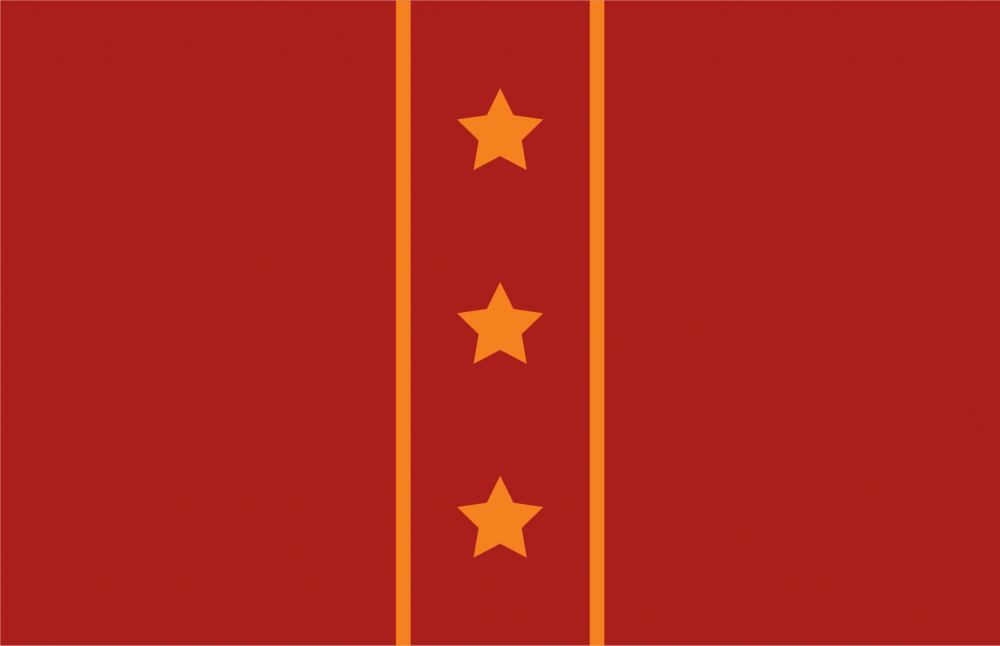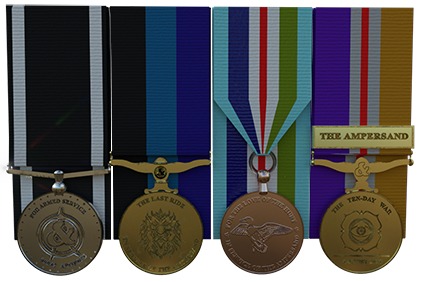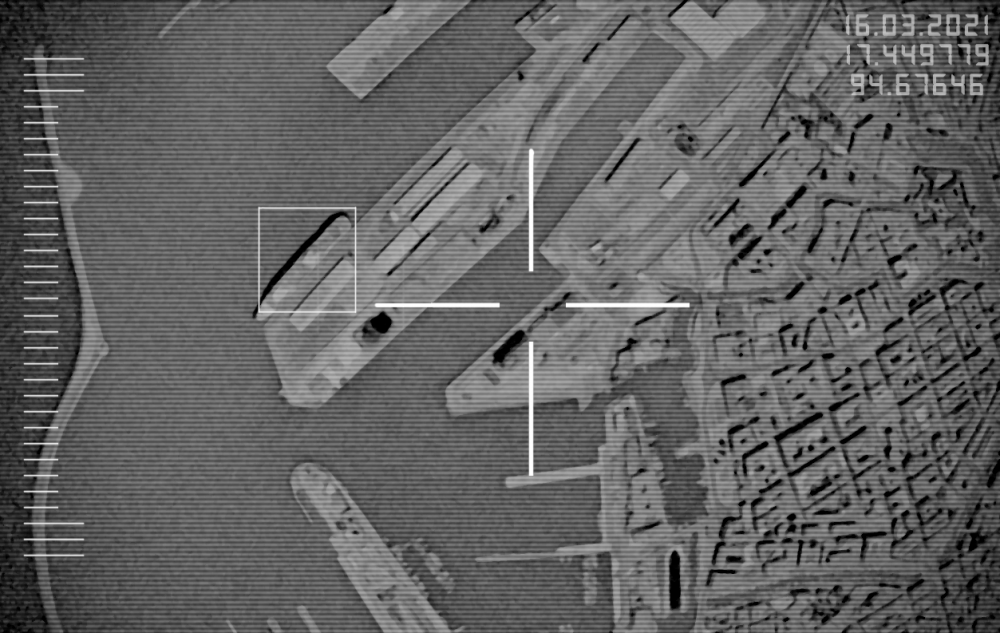
TUFM
Members-
Posts
19 -
Joined
-
Last visited
Profile Information
-
Leader Name
Anthony Barker
-
Nation Name
TUFM
-
Nation ID
57389
Contact Methods
- Discord Name: Anthony.B
Recent Profile Visitors
1169 profile views
TUFM's Achievements

Casual Member (2/8)
19
Reputation
-
-
SPOTLIGHT 12 - NON ALCOHOLIC DRINKS Hot beverages are pretty similar as the Western European Counterparts. Tea is drank significantly more than coffee (though both are drank). Tea is consumed the English way, with milk (usually fresh, though condensed when necessary) and is usually not consumed after dinner. A Cup of tea - This is usually made strong but then a lot of milk and sugar is added. Milk is consumed a lot, not just with children and can be fortified by adding a spoon full of sugar. Milk - Full fat and fortified with either sugar or a spoonful of vitamin extract. This is usually consumed with Supper however it is still very common to see people drinking from a bottle of milk in the same way that in many countries people will drink from a bottle of a soft drink. Coca Cola is the most popular soft drink in the UFM and makes up approximately 50% of all sales of soft drinks. Sarsaparilla is very popular and is available on tap in most pubs. Tropical style soft drinks with flavours such as guava, pineapple, mango etc are very popular. A Glass of Suparfahrrar, a popular brand of Sarsaparilla. SPOTLIGHT 12 - ALCOHOL On tap beers are the most popular alcoholic drinks within the UFM, however depending where you are this can broadly shift to Mead and Sweet beers in the North, and Vodka and lager in the Centre. Ales, Stouts and Bitters are very popular across the Country and intervention programs mean that street drinking is almost unknown. The most common beer is called ‘drank’ and is brewed in Armford Commune. It is a sweet yet mild Beer, dark in colour and somewhat thick. A Pint of Armford Dank Guinness, Spitfire, Flowers are commonly consumed, and a beer now rare in England known as ‘Mild’ is Common in the North. In the Central island, Vodka is drank more commonly, though not to excess. Revolution Vodka - A Premium Vodka in an ornate bottle. A criminal offence committed whilst under the influence of alcohol is aggravated under the Consumption Act 2001 – meaning a harsher sentence and compulsory rehabilitation before parole scheme
-
SPOTLIGHT 12 - SUPPER UFM is still a big consumer of a fourth meal. Especially in Winter when the average calory usage is higher. This is traditionally Eggs and bread – or Bread and Jam. Generally speaking, toast is not as preferred as bread and butter, and a government scheme has sought to give every family a Compact bread maker, meaning most UFM kitchens will have a sink, microwave, stove, fridge and bread maker as standard. Bread and Jam - Sometimes the Jam is baked into the bread. Eggs and bread
-
SPOTLIGHT 12 - DINNER Dinner is served in the early evening. This is the main communal meal of the day and is usually a very hearty rich affair. Common meals include a Roasted meat – which is usually eaten on weekends (with unwritten tradition of Beef on Saturday, Lamb on Sunday) and another roasted meat such as chicken, turkey or goose or maybe pork in the middle of the week. Roasted Lamb with trimmings Left over or over produced meat stocks are then used to furnish meals for the following days. Beer or Ale Pie is extremely popular, especially when made with Dank, a traditional Union Stout. Dank Pie This is usually beef, cut into smaller strips and sauteed with onions, celery and carrot before being reduced in a Dank Sauce and then cooked into a cold water pastry with a flaky decorated lid. This is usually eaten with mashed potatoes and peas. Stew is another favourite and is usually made with Dank. Beef and Dank Stew SPOTLIGHT 12 - DESSERT Dessert is eaten and compared with a lot of other UFM staples is relatively low key. Ice Cream is consumed, especially in the North where it keeps easier – The favourite flavours being Chocolate and Cream and Mint Chocolate. Chocolate and Cream Ice-Cream Cripple, is a Toffee and Chocolate cake made from tapioca flour which is very dense in shape, but light to eat and is popular along the younger generation. Cripple Cake Semla (said Semlar in its native form), from Scandinavia is very popular, and is a shoe pastry roll, served with thick cream and in a bowl of hot milk. Semla with hot milk
-
SPOTLIGHT 12 - BREAKFAST Breakfast is considered the main meal of the day, especially during the harsh winters. A Union Breakfast (or Full union breakfast) is similar to a Full English Breakfast containing Bacon, Eggs, Beans (baked or pinto) tomatoes, sausages and toast or break, usually served with a bowl of Pate and tea or soup. A Union Breakfast A common quicker meal than this is the Half Union breakfast, which is simply sausages and fried eggs. Eggs and bread is also a common meal, especially amongst non-meat eaters, however Union chickens generally lay eggs with a much redder and richer yoke. Occasionally paprika is added to eggs and bread to give it more of a flavour. Eggs and Bread - Note the Paprika Sauce. Burgoo is also commonly eaten for breakfast. This is usually either Bacon, or belly pork, cut and fried in a Tarry Gravy and then placed over a buckwheat porridge or rice and often served with an egg on top. This meal is easy to batch produce and is common in the military, especially when deployed. Cereals are also eaten regularly, though a hot breakfast is generally preferred when the weather is cold – Hot porridge is common and is flavoured with Honey or Raspberry/strawberry jam. Beef Burgoo SPOTLIGHT 12 - LUNCH Lunch is usually taken lightly, with large amounts of people eating at Galleys or fast food (though due to the price fast food consumption remains steady whilst the use of Galleys continues to dominate and grow). Specific Union lunch food would consist of sandwiches or Slabs. A slab is a sandwich, usually containing Roasted meat such as beef or pork, but the outer layer is akin more to a flaky pie crust than bread. This is usually served with a honey mustard or Tarry sauce. Beef Slab Another traditional lunch or snake is called family pie. This is a small single serving cold water pastry pie with a flaky lid, which contains Chicken in a tomato sauce, and a fried or baked egg on the top. Family Pie
-
SPOTLIGHT 12 - FOOD IN THE UFM How do Freemen do food? Broadly speaking, food in the Union of Freemen takes its lions share of influence from Western Europe. Though especially in the former Russo-Territories it may have an eastern flare, the majority would not be out of place in any westernised country. Though fast food has seen an emergence in the past 6 years with chains being allowed since the untightening on enterprise, the most common way to eat is a communal dining facility, known as a Galley. A Galley is a large facility that batch produces and serves meals for anyone requiring them. People can go in for lunch, purchase a meal to sit down and eat and also purchase an evening meal which they can then take with them and eat at home. The Galleys are heavily subsidised and are not allowed by Law to make direct profit, anything made financially must be repaid back into itself ensuring that they use high quality ingredients and are friendly, warm places. One major difference however is the lack of Chips (commonly referred to as fries in countries with a large US influence) eaten at home. Two distinct varieties are available as fast food options, being fries (thinner, crisper and usually served with Hamburgers) and Chips (fatter, creamier inside and generally served with battered fish). Potatoes are usually served mashed, roast or boiled and most world-wide fast food restaurants have adapted to this preference – for example, McDonalds within the UFM will serve both fries, or a serving of smaller roasted potatoes. Generally, food is hearty and uses good quality ingredients. Commonly used spices include the usual salt, pepper, garlic, Paprika, ginger and cinnamon. Condiments are common, with Tomato Ketchup, Brown Sauce (UFM is the largest consumer of HP sauce outside of the UK) English Mustard, Tomato Relish being used regularly. A native condiment, Tarry sauce has a barbecue flavour and is sweet, with a tangy flavour and is used as both a marinade and sauce – there are various brands available.
-
SPOTLIGHT 11 - RELEVANT LEGISLATION UPDATE The National Identity Act 2023. S1. The Current National Flag of the Union of Free Men, established Circa the 1984 Revolution is to be replaced by the Tri-Star Variant approved by Government in 2022. S2. The original flag will be known as the 1984 Crest Flag, and the 2023 Flag known as the Flag of the Union. S3. The 1984 Flag is to be retained as the Crest and Seal flag of the Union and will remain in use in that capability. S4. All state flown flags will fly the Flag of the Union from April 2023. S5. The 1984 Crest Flag will remain over Central Government buildings, such as secretariats. S6. The Flag of the Union will be utilised for full national use and will appear in all other capabilities replacing the 1984 Crest Flag. S7. The Colours of the Crested Flag are not to be amended or changed unless on a military uniform for the purpose of subduing prominent colours. S8. During peacetime, Where Flags of more than one nation are flown together, the flags should be of approximately the same size and no one flag should be flown higher than the other. S9. During periods of Hostility, The Flag of the Union may be raised above the flag of any hostile or neutral nation, however the height should be approximately to that of other allied nations displayed together. S10. A person is guilty of an offence if he intentionally damages or destroys the flag of the union, the 1984 Crest flag, or any item prominently displaying such, or is reckless in his action as to whether they may be damaged or destroyed. A person convicted under indictment will be liable be sentenced to imprisonment for a period of no more than 12 Years. -------------------------------------------------------------------------------------------------------------------------------------------------- The Necessity to change to a less authoritarian flag came about with the general softening of Socialist attitudes. Whilst retaining its original Left-Wing Colours and being much easier to recognise. The Two Vertical stripes represent the North and south Union Sounds, channels between the three prior Colonial islands which are represented centrally by three, five pointed stars. Fig D1. The New Union Flag (Fluttering and as a Graphic).
-
SPOTLIGHT 10 - CAP BADGES OF THE UFM ARMED FORCES The UFM Forces are split into 3 Distinct Arms as per most modern Armed Forces - Army, Navy and Air Force. The Cap badges are displayed below and in the coming months, more detail into each will be added. These are representative drawings and coloured pictures and renderings as well as photos of originals will also follow. Most Regiments and Corps of the UFM Forces draw their heritage from the Colonial era - A large proportion being of Anglo (British) or Norse (Scandinavian) origin, as the Russian Colony did not field a separate Colonial force. Certain Units do however take on the Russo (Soviet Russian appearance, however these are not proportionate). Due to the UFM policy of not displaying crowns due to their association with non-democratic single rule, any previous unit badges or crests (specifically the Anglo-Norse ones) have had their crowns replaced by the triple tiered Armford Castle which became a symbol of revolt after its storming during the revolution.
-
Well spotted. I'll have it changed!
-
SPOTLIGHT 9 - CAMPAIGN AND SERVICE MEDALS With the joining of the Ampersand alliance in 2019 and the subsequent moved to Bourbon Street, Servicemen and Woman of the Armed forces, Relief Services and Emergency Services became Eligible for Campaign/Service Medals issued by the alliance. At the time of writing these are the following Campaign medals shown in a Court mounted medal Rack. From Left to Right: The Apophis Engagement Medal: Awarded for Service in the defensive war against the Alliance 99942 Apophis (99A). The Last Ride Medal: A Global conflict which took place between May 2nd and 20th 2021. This was the last Conflict with the Quack Sphere. The Duckhunt Medal: A Global Conflict which occured between October 30th and December 14th 2020. this resulted in The defeat of the Quack Sphere. TUFM Units fought alongside Ampersand Units in the Northern Theatre. The Ten-Day Medal: The Ten-Day War was a Global war that was fought between August 21str-31st 2020 During which units from the Ampersand Alliance took up Arms as part of the Swamp/Hedge Accord. --------------------------------------------------------------------------------------------------------------------------------------------- There are four Medals issued form the first Bourban Street Campaign and their details are to follow.
-
A Few days had now passed and the Taskforce was in position. There had been the odd air sortie from the antiquated Aircraft that the rebels has tried to test the Flotillas air defences with but Combat Air patrols had dealt with them long before they even because a glint of a threat. In the transports and Assault ships three days of ferrying had filled the corridors with soldiers and marines from West Tuddenham and UFM, all together and ready to go. Talks had stalled. The Rebels had allowed a Union supply ship to drop supplies for the crew and passengers of the Grandeur, and had then chanced boarding it, erroneously thinking it was civilian. The firefight had been brief and sharp and the Ship had sailed away with its full compliment still alive and well. Plans had been drawn up, ammunition and stores issued to the troops and O-group briefings has been many. Everyone knew their role and the only question now would be when. Rifleman John Vellosov, 1st Battalion, Ballahoo Rifles. Ballahoo Rifle Brigade, 14th Division - UFM Expeditionary Force. "We paraded in full kit on the quarterdeck. We were told to ditch Armour and wear webbing as we would be moving very quickly, especially during the opening phase. Our Plate Carriers were taken from us and loaded into a container that they said they would ship to us when we moved into a less dynamic role. We were then told that this morning was D-Day and H-hour would be around 4AM. Plane had changed somewhat and our Division would be the first wave to land to the NORTH of the Harbour. For all of the beauty of the area, there was only a 2 miles stretch of landable beach. As we briefed we heard a continuous roar of Helo's from the small flight deck ferrying the Special Forces guys to the Hills behind the landing sites. They would do what they could to destroy the defences on the beach but we were told in no uncertain terms to expect heavy casualties on those beaches. We prepared kit and got ourselves motived. At around 3AM a group of Sailors came in and started calling us out by Company. There they lead us down the maze of gantries to where our own landing craft would be. When we reached the deck it was drizzling but the atmosphere was warm and sticky. We prepared ourselves for the long climb down the cargo net to the craft, with my kit weighing well over 80 lbs it was not easy.,," Lieutenant Mark Larrson, 1st Battalion, No2 Red Viking Commando Brigade, 6th Division - UFM Expeditionary Force. "The landing craft pitched and chucked us around but we were laughing on the jag towards the beach. The Brigade was on the Southern most Edge, closest to the Harbour wit the Ballahoo Rifles on our North flank. We were out before them though, as a blocking force to ensure that reinforcements didnt make it to the beach. When we were about 300 Metres from the beach there was an almighty rumble as a naval Missile salvo turned up million tonnes of sand and trenchline, it seems to last for hours but in reality cant of been much more than 20 seconds. It was sharp and it did wonders to buck up our morale." The Ballahoo Rifles, No2 Red Viking Commando and the 2nd Brigade of the West Tuddenham Light Infantry were now approaching the beach at high speed, going into combat together, as allies, for the first time since the 2011 War between them. Hundreds of men and women huddled down in wet landing craft waiting for the moment the ramps would drop and they could make their way onto and up the wide open tropical beaches of Galacea.
-
The Taskforce was now well underway. Scattered Naval Vessels of both the West Tuddenham and UFM Navies had now rendezvoused and were steaming steadily into warmer waters. Auxiliary and supply ships had caught them up whilst they refuelled at Ganymede Naval Station, the southernmost UFM Naval Station, a floating Sea base used as a base for Rescue ships, ice breakers and to resupply Ships on long journeys. Over the next day or so they would be approaching the territorial waters of Galacea and tensions began to raise. The last few days had had an almost carnival atmosphere to the embarked troops. Command had taken the decision to mix units within the Divisions on their ships in case any were lost and generally the WT and UFM soldiery had got on like a house on fire even though only ten years previously some had engaged each other over their rifle sights. The animosity, if any, was in the usual place – that being between the different arms now all packed tightly aboard ships which had only a week before been transporting holiday makers to warmer climes. The irony that a cruise ship was at the centre of the entire crisis was not lost on the troops. In the bridges and makeshift command rooms officers poured over maps and recce pictures. General Nekrasov was the task force commander and was seconded by Admiral Davies from the WT Navy. O Group meetings with Brigade and ship commanders were organised daily at or around noon and the Flight Deck of the Agatha became so busy with helicopters coming in from the troop-carrying ships that they had to hold Combat Air and force protection patrols going out or coming in for half an hour either side. Morale was extremely high however throughout the expedition. Rifleman John Vellosov, 1st Battalion, Ballahoo Rifles. Ballahoo Rifle Brigade, 14th Division - UFM Expeditionary Force. We settled into routine easily enough. Meals were by Company. 3 times a day, hot and tasty and we were much surprised. We were allowed 2 pints of beer each evening when not on duty and no one I know of went mental. Most of the time when we weren’t on guard or training we sat around the lounges or laid on our bunks, there wasn’t much to do seeing as phones had been taken off of us when we embarked. Every day we spent a good 4 hours preparing for what was coming. Our company commander liked to keep us well rested, but rain or shine (and it did both!) we ran around the ship, practised skill at arms with our new rifles and ran through first aid drills and such. It was a pleasant time. Lieutenant Mark Larrson, 1st Battalion, No2 Red Viking Commando Brigade, 6th Division - UFM Expeditionary Force. After being at sea for a few days I was called into the Company commander and told that each Company in the brigade was to provide a platoon to do a condensed 2-day naval firefighting course, and that my platoon was picked. For 2 days we sat learning about water pressures, foam systems, water monitors, flash overs and when ours brains couldn’t take no more, they drilled us and drilled us in Breathing Apparatus tasks. It was clear the Naval types liked to see us sweat. Once it was finished, we were given a timetable which effectively meant that every third day we were put on standby as fire response. This meant even more laying around waiting but it did get us out of guard duty, fatigues, and any other nonsense they could throw our way! Shortly after sunrise on the 8th day of movement south two Predators from UFS RONAN took off for the first manned Recce Flight over what was now openly considered Enemy territory. Flt Lt Calver was one of the. Flight Lieutenant James Calver, No3 Squadron, REDAF. 1st Expeditionary Air Wing. We took off at around 0540 from the RONAN. We changed course very little as the ship was steaming in the same direction anyway and immediately climbed high to around 35,000 feet. We stayed reasonably close while we were over international waters. The immediate flight was unremarkable, and we refuelled from a West Tudds refueller not long before we approached Galacean Airspace. After refuelling we confirmed our permission to cross the Galacean Airspace and were given the green light from Fleet. We dropped to less than 50 foot, hugging the waves and we sped up. It was a test of their air defences and a Recce of possible secondary landing sights in one go. We knew our own satellite recce was doing overtime and we also knew that High level recce from other squadrons had also been ongoing. We took our job seriously enough and as the coast smudged into view, we readied ourselves. We stayed close as we flashed over the ground and within seconds the sands of the northern beached melted away into thick tropical jungle. We reached our checkpoint and turned south towards the capital and it opened up ahead of us, grey concrete, inhospitable but as we approached it we could see the docks on our left, we swooped down low and fast past the Grandeur which was still sitting there. We could even see the passengers, herded in the large dinner halls. We flew fast past and were locked up by a SAM somewhere to the south so broke and went high in a flash – we did this mainly for their morale, before turning north again, back towards the fleet. Figure 2: Aerial Photograph taken from a REDAF Predator Aircraft of the Grandeur lying in Harbour after its capture.
-
TUFM started following West Tuddenham
-
The following Morning, on Cold and windswept Drills Squares throughout the union, men and women of the 6th, 9th and 14th Divisions Stood Coldly to attention whilst commanding officers briefed them enmasse and political officers gave them a last injection of tired patriotic fervour. Political Officers we're almost a non-entity these days and indeed the POLCORPS had lowered in numbers so much that now days they attached a single Officer Per Brigade rather then the days immediately after the revolution when each platoon had one attached. Enlightenment they called it, or the 'new system' Socialist at heart but much more diverse in thought and action. Shortly before 0600 the Divisions moved to their relevant embarkation areas - the 6th made their way by Coach to a REDAF Station to the South of GEORGIAGRAD where they were embarked into Patriot Aircraft. A Refuel plan was drawn up and each man was issued extra rations to consume in the aircraft on the long journey South. 9th Airborne made its way with its own mechanised transport to Armfield and was joined by the 14th Rifle Division who had done the same. Here they were loaded onto 4 Fleet Auxiliary Ships which had already been cleared for their embarkation. Every Soldier in the Expedition had by now been reissued with the New Service Rifle, the L21 IBR and has received training on it - The Ship bound troops would receive extra training on the Journey South. They had been issued Lightweight Jackets for use in the jungle and Jungle issued boots which they all wore in a feeble attempt to break in - They were not good for the UFM weather, especially in these winter conditions and many literal Cold feet were felt across the Troops before the fleet got into warmer waters. The 3 REDAF Squadrons were formed into the 1st Expeditionary Air Force and their Ground crews and support staff had made the journey to Armfield Naval Station by coach and finished it in Helicopter before the Aircraft themselves landed in Early afternoon on the Decks of the AGATHA and RONAN which were now firmly on route towards the rest of the Flotilla. Cavalier Tanks and lighter Armoured from the Rifle Divisions rolled onto 12 Calisto-Class Landing Ships which would join the Fleet and deliver, where necessary the 2x 200 Strong Tank Brigades, plus Armoured Fighting Vehicles for the Infantry. It was no mean fete, but it was something that was practised regularly. Divisional Mobilisations were hit out at least once a month and twice a year the Secretariat of Defence insisted on a Corps Get together. Interestingly now, they deployed individual divisions out of their normal Corps but clever commanders knew it would only be time before the rest would be joining them. Over the next few days, Members of the UFM Armed Forces prepared themselves for what was to happen. Rifleman John Vellosov, 1st Battalion, Ballahoo Rifles. Ballahoo Rifle Brigade, 14th Division - UFM Expeditionary Force. 'We embarked on the JENNIFER. A large Cruise Ship brought into the Service to move us South. Getting on board was easy enough and we made our way with our kit to the grand dining room which was about 5 floors high with a large open area in the middle which looked down to the first Deck. We dropped kit and were given a Speech by the Captain and our Divisional Command, telling us what he expected from us and what he expected when we landed. Shortly afterwards we were dismissed by Brigade, and then by Battalion and finally by Company. My company was taken to where we were to be billeted and were happy to realise it would be actual rooms (Some of the lads ended up on Camp beds in one of the dining rooms, the Casino or stores). We were told where our Stand to Position was, where our Muster point would be and where we would find out life jackets. The main deck had a promenade, a mock shopping street running along the centre which was about 150m long. The shops were closed up, though they stuff a UFI Shop in one and it was quite well stocked and cheap. A Jewellers across the deck was converted into the Armoury and we dropped weapons in before stowing our kit in our rooms and making our way back onto deck for when the Ship left harbour. It was amazing to see the people of Armfield out on the Quayside and with an extremely loud roar on the ships horn, it slowly left the concrete. There was an almighty cheer and thousands of Balloons were let off, all in red and yellow. Once the excitement died down we were called back down for another briefing and the routine of life at sea for a soldier began.' Lieutenant Mark Larrson, 1st Battalion, No2 Red Viking Commando Brigade, 6th Division - UFM Expeditionary Force. 'We would be travelling South to an unnamed friendly Airfield somewhere in the Tropics where we would await the order to strike. The men were in good spirits and I did my best to keep this up. They Brushed their beards to make them appear bigger and they sharpened their Axes and hang them from their webbing like the Vikings of their heritage. We sat in 4 lines staring deftly towards each other knowing that once we were South, anything could happen. The thought of Action was almost inspiring to them and not a single one of my men looked upset, pained or fearful of what was coming, in fact they all seemed to yearn for it. Flight Lieutenant James Calver, No3 Squadron, REDAF. 1st Expeditionary Air Wing. 'We took off from REDAF Killingford shortly before dusk and climbed to 35,000 feet before turning Due South and heading towards the fleet. The Squadron was in fine form and there was excited chatter over the radio. We RV'd with No14 Squadron to the North West of Armford and cheekily found permission to fly over the Capital in Squadron Vic Formation, 24 Thundering Aircraft, it was grand in the cockpit but must of been awe inspiring on the deck. Once over the South Sea we turned slightly west and got permission to enter the Battle Groups Airspace. It was long before we had landed on the deck of the RONAN, graciously allowing the boys from 14 to land first as they had travelled a lot farther than us. Sea duty would have its challenges but for now the expedition was off to a good start. Once the aircraft were stowed and we were taken down for the first of many briefings.' Trooper Megan Lacey, 7th Lancers Brigade, 8th Armoured Division - UFM Expeditionary Force. 'Our Cavaliers arrived by Rail to Armfield Harbour, where we had been since the previous morning. We were marched to the Railhead to collect them and after some normal confusion we found Gaffy, our Tank. The Gun was secured and everything was stowed away for transport but we were given the order to load onto a Fleet Auxiliary Ship called the Creamfields. The Rest of the Division spread out in the Woodstock and the Glastonbury. Only the Vehicle Commander, Corporal of Horse Gadd and myself being the driver were allowed into Gaffy to drive her onto the Ship, along a narrow gantry as it were - I wont deny I was nervous as we edged forward but once the tracks were secured onto the gantry it was an easy driver forward following a Sailor who marshalled us into a bay. Once in position we killed the engine, secured the hatch and left her for most of the voyage. The Squadron Commander called us together and gave us a basic briefing. We were to be part of a blocking force and if needed but he wouldn't say where we were going. It was all very cryptic. The Quartermaster came around not long after we sailed and we were issued tropical under body armour shirts, cooling undershirts and a bag containing insect repellent, malaria tablets and salt blocks. We knew then that it would be somewhere hot, which would be a nice change. We were issued with our new Rifles which were still in their factory paper and were an immediate improvement on the L1AS (Shortened) SLR we had left behind. Training would commence that afternoon and go on for much of the cruise South.'
-
From: UFM Command To: Senior Command, Red Army, Red Navy, Red Air Force. Subject: Deployment. Message: Following Units to Deploy immediately. All Brigade Reservists to be recalled where necessary. 6th Parachute Divsion [1 PARA, 2 VIKING, 2 PARA] to REDAF Georgiagrad to Emplane. 8th Armoured Division [7 LANCERS, 13 REDTR, PROLETERIA LI] to Armfield Naval Station to Embark. 14th Rifle Division [18 REDTR, DOCKHEAD RIFLES, BALLAHOO RIFLES] To Armfield Naval Station to Embark. 9th Airborne Division [31 LANCERS, GEORGIAGRAD RIFLES, ROBERTOGRAD RIFLES] To Armfield Naval Station to Embark. No1 Squadron REDAF to Carrier UFS AGATHA for deployment. No3 Squadron REDAF to Carrier UFS RONAN for deployment. No14 Squadron REDAF to Carrier UFS RONAN for deployment. All Brigades to maintain High alert due to possible related terror incidents. Alert Status has been Lifted to IMMINENT. Situation Map Attached. Figure 1: Situation Map - Day 2 of Operations
-
Three days had passed since the Incident began. In that time facts had slowly started to emerge from the mess. D38 had scattered spent uranium across an area fortunately only around 12m square. The crew had not been heard from and were presumed dead. The Ocean Liner SS Grandeur still berthed in Hylian harbour, with its passengers imprisoned on board. UFM and WT High level Recce flights and Satellite images confirmed minimum civilian movement in the Capital and major cities and large build ups of military vehicles and men at staging points in the thick Jungle surrounding the Flood plain in which both Hylian and its second city Sumdara sat. Clandestine Special forces had deployed via civilian airliner to a neighbouring nation and had crossed the border within hours of the incident and were now feeding information back to the Joint UFM/WT command team, sat on UFS Agatha, the Flagship of a now expanding joint carrier fleet which sat squarely 200 Nautical Miles from the coast - Just within international waters. The war within Galacea itself was going less well for the rebels and the Regular Army had managed to gain a foothold on the South Coast and were very slowly pushing the rebels back. All in all, the news was reasonably positive, that was, until Rogers entered Bilsons office half an hour before the daily briefing. 'Can it not wait?' Bilson said not looking up from the paperwork he was preparing. 'Not really, comrade.' Rogers replied. Bilson looked up. 'Gian are stepping in, supplying the rebels. Tanks, Weapons, Aircraft.' 'Don't be so ridiculous' Snapped Bilson. 'I wish I was sir, picked up by three of our sleeper agents and confirmed by one from Tudd's as well' 'when did this happen?' 'It hasn't yet, but Air Rec shows a build up on Gian's Southern Border.' 'Then we need to move quickly.' Bilson stood, and beckoned Rogers to follow him. They entered the briefing room together, all seats other than their own were full and the ensembled men and women were engaged in small talk, jovial in nature. 'I'm sorry to start to abruptly.' Bilson said walking to his sear. The room was ushered into immediate silence. Around the table sat the head of each branch of the armed forces. Two Senior WT officers, starred generals, one from the air force and one from the Army. The Home Secretary, The chancellor of the Exchequer and the Secretary for Transport and Supply sat at the opposite end, and then at the far end of the table, in a commanding position the Supreme Socialist. Bilson looked at him. 'My apologies Comrade.' He said. 'No, you have the floor comrade Secretary of Defence.' The supreme Socialist said. The atmosphere within the office was always more official. 'We have received information that the Sovereign State of Gian is to begin supplying the Rebel Forces within Galacea.' There was a brief murmur of surprise. Relations between Galacea and Gian had always been extremely strained and many in the room initially believed a conflict in the region would be between those two states. 'Unless we move quickly, we will lose the narrow window we have to retake the Grandeur with minimal friendly bloodshed.' He said. 'What do you propose?' The Supreme Socialist asked. 'We have discussed our options, and I think Option C is the one.' Bilson replied. 'Remind me Comrade Secratary' 'We take the port of Hylian with a fast landing both air and sea. We create a buffer zone around it and we wait. At the same time, we launch a massive air campaign against the Rebels, taking out bases and staging points, including the ones in Gian. Once the port is secured, we move an expeditionary Force to the South and retake the Capital - at this point we either hand it back over, and let them fight on themselves, or we move north, pushing along the rebels with them.' 'You are talking about war with 2 nations?' The home Secretary interrupted. 'No, Gian is a nation, but the rebellion is not recognised and would not stand up to an assault by us.' 'What resources would we need to accomplish this?' The Supreme Socialist asked. 'Well the issue is the Jungle, it makes up the vast majority of the ground. Armoured vehicle movement is going to be an issue. We need a parachute unit to take the port, followed by the Commandos to secure it. Then an Armoured Division To move in and make sure they don't take it back. A further 2 divisions to then move South.' '5 Divisions? That's huge.' Again, from the Home Secretary 'I've not even come to Air and Sea power yet.' Bilson said, trying hard to ignore his annoyance. 'What would you need from us comrade?' Admiral of the Fleet, John Tranter, Commander of the UFM Navy cheerfully asked. 'Comrade Admiral, The Flotilla we have is well placed but will soon need to move into potentially hostile waters. A Submarine Squadron to picket the Coast and prevent anything from intercepting the Flotilla. The Rebels have no Naval Power, but Gian's Navy is not to be sneezed at. We could use a Second Carrier as well, for air power' 'You shall have it.' Tranter replied. 'And us?' Asked the Marshall of the Red Air Force, Steven Larrson. 'We need to be able to deliver round the clock for approximately 14 days.' Bilson Replied checking over his plans. 'Say, 4 Squadrons of Predators, as well as the ones on the carriers?' Larrson replied writing notes. 'Yes, as well as their support aircraft.' The Predator is the Unions License Built F22 Multi-Role Combat Aircraft. In Later 2015, the Union purchased licenses from 3 former Weapons building Companies, giving them the rights to their older technology and the rights to name use. The companies, Sankey, Abbey and Triumph were now geared towards military and vehicle production and were amalgamated in 2019 to forum SAT Union Systems, SATUS for short. SATUS now built all union military equipment and exported what it was allowed. In 2020, facing criticism of the huge spiralling costs of the project, the united States allowed SATUS to build the F22-Raptor for an unkown fee, though estimated to be in the hundreds of billions. 'Who will you earmark Field Marshall?' Bilson asked Field Marshall James Mustard. 'We will send 3 divisions, and WT 2.' "6th Parachute Division will take the port. They have 2x Parachute infantry brigades, and a Brigade of Red Viking Commandos. 8th Armoured Can move in to secure. 14th Rifle Division can then go in to head south, they are mechanised and can move with or without their heavy equipment. 9th Airborne Rifles will be on reserve and embarked as part of the flotilla.' Mustard replied, almost instantly knowing the answer. He turned to the Senior WT officer present. 'We require 2 Divisions, as well as air forces. What can you offer comrade? The Joint Task Force will be headed by General Larkspur from UFM, with the Land and Sea Forces under overall UFM command, but we would like WT to command the Air Campaign' and waiting for a response, Bilson finally sat down to take a breath.

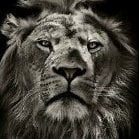
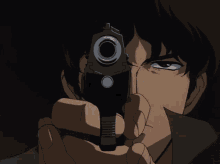




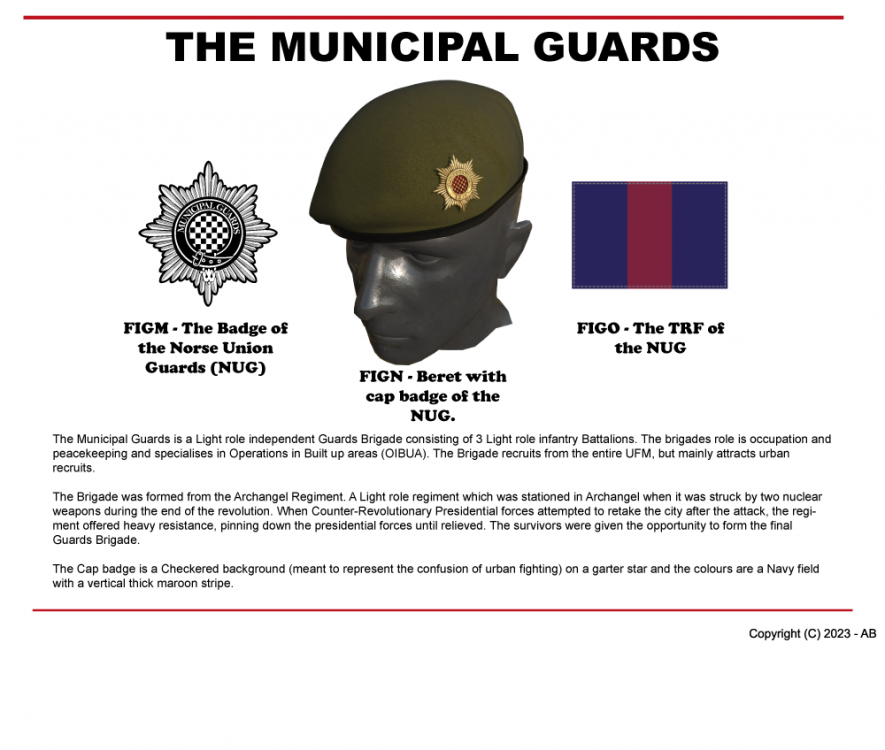
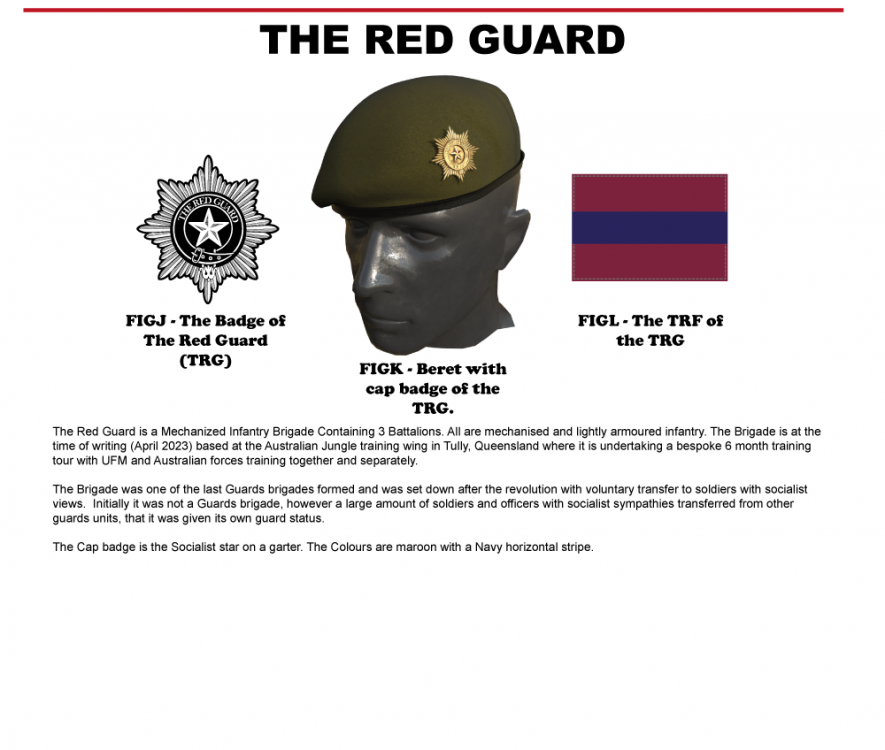
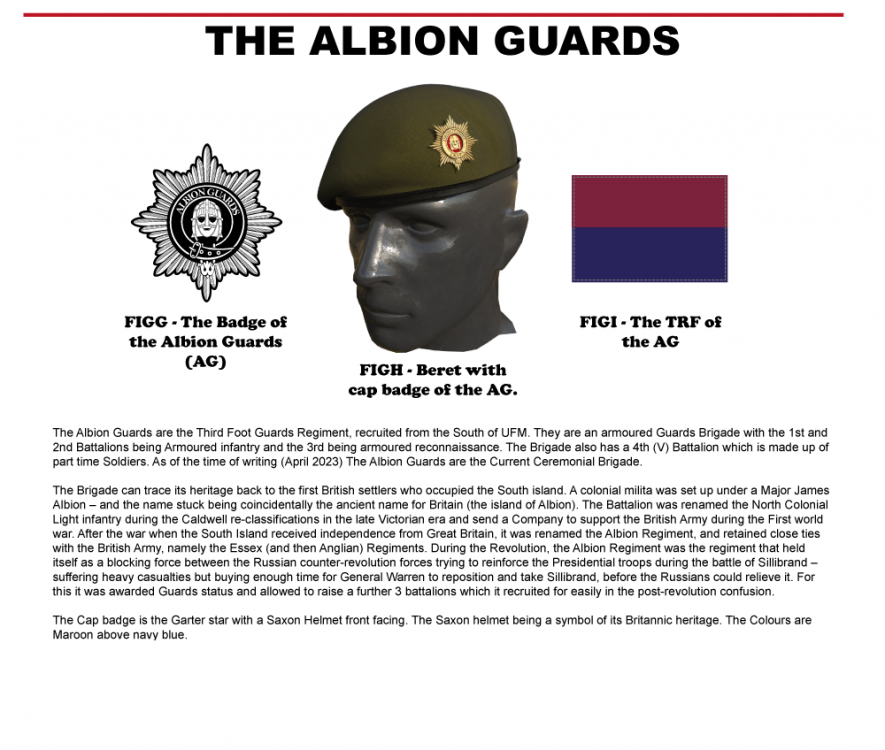
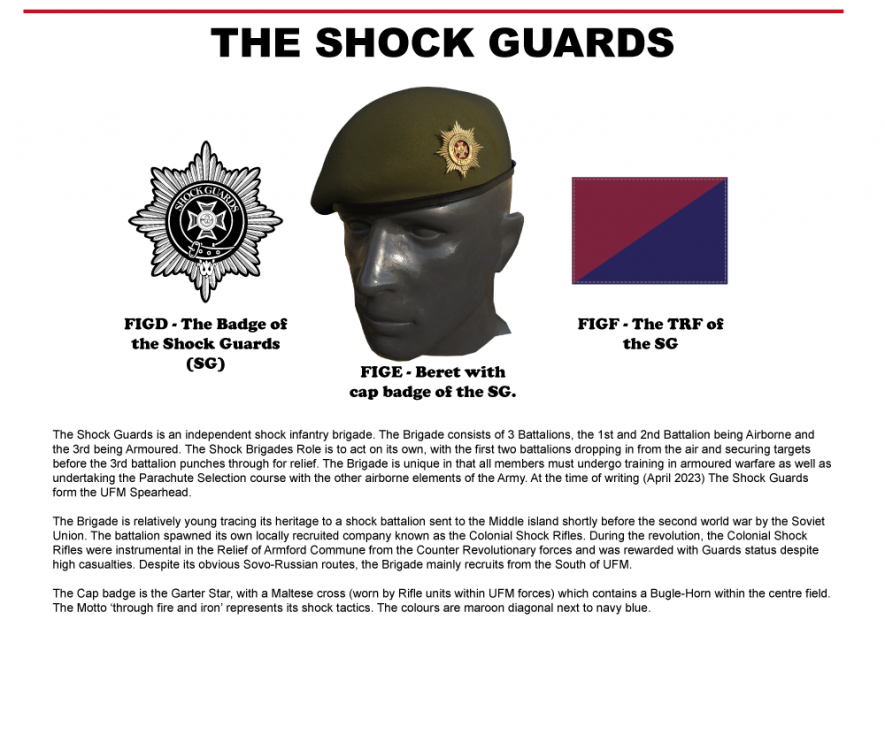
.png.871670aeab6a4c69b1090d5d345bf697.png)
.png.537391c06cceef819f28cbb5a01fd9ad.png)
.png.f586ba2f5addfb7a60ff32065d631e25.png)
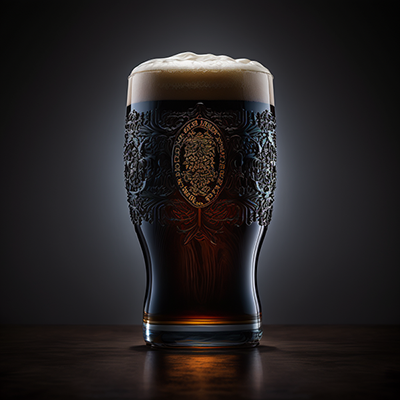
.png.c37b384b520dc11d639941ec054aeccd.png)
.png.834e7634eb95a67fd14233ea5c8f4051.png)
.png.6ce2dea3fda24fe9ec6d10d52430a798.png)
.png.e4e06bc62c16c17721f5ba8aad802c5e.png)
.png.ce6be88b33c11af56f7ca9c9f1f6f136.png)
.png.32d24e8a2188b760d3bb9a33d8f9352d.png)
.png.0550a1b6f0d8e3468fea062e98943132.png)
.png.c47f4ad5a21df28d070e91995c5fdfd9.png)
.png.6f2bc0a839a80a50b518335ac5624c4b.png)
.png.532789ba833636be4173ba26ef83c8ca.png)
.png.2e28114ac0daa2f96c7c5218b3d6bb9d.png)
.png.8c420c2158873a198940cbe76529537a.png)
.png.0c373094217ac86430c5ba6fc704ad69.png)
.png.730efe6ba8ec211e5dc48403917a095d.png)


